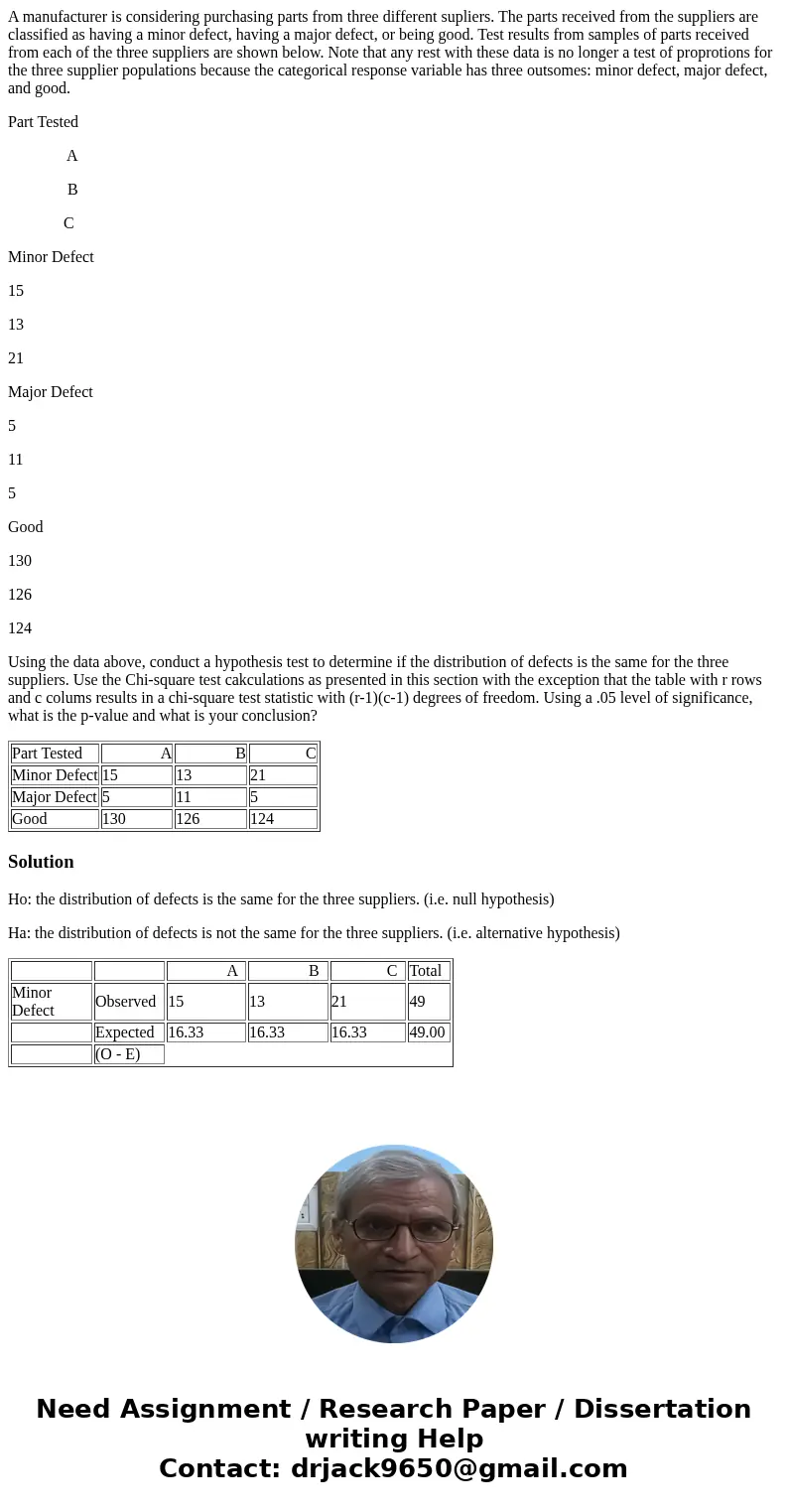A manufacturer is considering purchasing parts from three di
A manufacturer is considering purchasing parts from three different supliers. The parts received from the suppliers are classified as having a minor defect, having a major defect, or being good. Test results from samples of parts received from each of the three suppliers are shown below. Note that any rest with these data is no longer a test of proprotions for the three supplier populations because the categorical response variable has three outsomes: minor defect, major defect, and good.
Part Tested
A
B
C
Minor Defect
15
13
21
Major Defect
5
11
5
Good
130
126
124
Using the data above, conduct a hypothesis test to determine if the distribution of defects is the same for the three suppliers. Use the Chi-square test cakculations as presented in this section with the exception that the table with r rows and c colums results in a chi-square test statistic with (r-1)(c-1) degrees of freedom. Using a .05 level of significance, what is the p-value and what is your conclusion?
| Part Tested | A | B | C |
| Minor Defect | 15 | 13 | 21 |
| Major Defect | 5 | 11 | 5 |
| Good | 130 | 126 | 124 |
Solution
Ho: the distribution of defects is the same for the three suppliers. (i.e. null hypothesis)
Ha: the distribution of defects is not the same for the three suppliers. (i.e. alternative hypothesis)
| A | B | C | Total | ||
| Minor Defect | Observed | 15 | 13 | 21 | 49 |
| Expected | 16.33 | 16.33 | 16.33 | 49.00 | |
| (O - E) |

 Homework Sourse
Homework Sourse